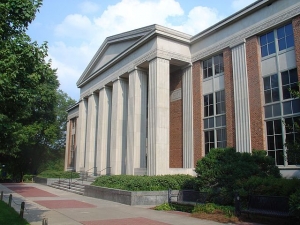
There’s a $30 billion problem looming on higher education campuses nationwide. Campuses that expanded during unusually large student population growth during the 1960s and 1970s are now dealing with facilities that are more than half a century old. Not only are the facilities aging, many will become unusable if something is not done soon. Most have deferred maintenance reports that date back for decades… and now, the immediate maintenance needs represent a multi-billion-dollar dilemma.
Public-private partnerships (P3s/PPPs) are attractive to university officials because these types of engagements offer immediate relief. Private-sector capital is available along with great talent and expertise, leading-edge technology, risk-free project oversight and ongoing maintenance agreements that last for decades.

University of Georgia photo by Chuck – Main Library
Student housing is usually one of the first targets for a P3 engagement. Since 2010, more than 64,000 new beds at more than 100 different U.S. campuses have been financed and constructed and are currently being maintained by private-sector partners. The trend is only going to escalate in the next few years.
The Texas A&M University System selected private-sector partners beginning in 2013 to construct a total of approximately 4,000 beds at four different System campuses. The university’s solicitation documents listed specific requirements, expectations, success measures and timelines for each of the projects, including maintenance. This type of engagement is becoming common throughout the U.S.
The University System of Georgia in 2014 launched a public-private partnership for a student housing project that also covered multiple campuses. The System entered into a P3 engagement for a project that included 3,600 new beds and approximately 6,200 existing beds. The private-sector partner assumed responsibility for capital investment funds, development, construction, management and maintenance of the facilities.
The University of California Merced reached out to private-sector partners as it launched a $1.34 billion campus expansion. A private developer was selected to design, build and maintain a planned 1.2 million-square-foot facility. Similarly, Montclair State University in New Jersey also elected to use a P3 engagement. The university selected partners that included both a nonprofit and a private-sector firm to design and construct a $211 million, 2,000-bed student housing project that was funded through tax-exempt bonds. The partners will own, manage and maintain the buildings for 40 years or until the bonds are repaid. The facility will then revert to the university. Montclair State officials were more than pleased to get a new 2,000-bed facility and are delighted not to have to worry about maintenance costs for the next 40 years.
If, as most predictions indicate, funding for public universities continues to decline, public-private partnerships will become even more attractive as alternative funding options. Tuition increases, campus fees and alumni donations cannot begin to close the gap between available funding and critical facility needs.
